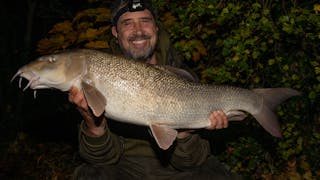
Crazy River, Savage Fish: A Journey in Pursuit of the Goliath Tiger Fish
For over three decades, Gary dreamed of catching a goliath tiger fish after first discovering the fearsome species in a book he borrowed as a child. This piece follows his long, determined journey from youthful fascination to battling river monsters in the heart of the Congo.
The first time I saw a photo of a goliath tiger fish was over 30 years ago when I was a kid and borrowed a book called ‘Somewhere Down the Crazy River’ from my local library. I was fascinated by the stories of these ferocious-looking fish—known locally as Mbenga—and the exploits of Jeremy Wade and Paul Boote, as they travelled to the Congo River, on the other side of the world, to try to catch them.
The other half of the book was about mahseer, a species I’ve fished on numerous trips for over the past twenty years or so, so I wasn’t sure if I’d ever get my chance for goliath. Even when myself and a friend managed to find someone on the Democratic Republic of Congo side of the river to go with – Pierre Oudart, who was one of the original group of anglers from Kinshasa who have fished for this species for decades and even featured in the renowned Douglas Dann book about the species – we still had problems, with the trip having to be cancelled several times due to ongoing fighting in the country, including the area where we would be going.
Last July, the trip finally went ahead, and although the fishing was hard going, as I had expected it to be, I managed to land one of 17lb and lose a couple of others, one of which was around 20kg—not unusual for this species as they have rock-hard mouths and jump a lot!
Overall, it was a great trip, and I really liked the river. However, I did want to see more of it, as the area that we were in has been the most heavily fished over the years. It has also produced many of the bigger fish recorded by sport fishermen, with fish up to 50kg having been landed.
I was very keen to return, so when the opportunity came up to return this February, via a friend of a friend, Graham Cawood, who had access to a lodge further upriver on the Republic of Congo side, I jumped at the chance. I was soon planning the trip with my boat partner, Marc Towers. Three other friends, Andy Cowley, Steve Dunbar, and Garreth Coombes, also joined us. We were all excited at the prospect of catching them on bait from the main river and lure fishing a clear water tributary where Graham had been catching quite a few. The main river is permanently coloured to varying degrees. Although it does produce fish on a lure, the gin clear water in tributaries, like the one we fished, dramatically increases your chances.
This time, I flew into Brazzaville—previously, it was Kinshasa on the opposite bank of the river—and after a night in a hotel, we loaded up the vehicles and embarked on a four-hour drive to the lodge—very civilised and easy compared to most of the trips I do. I’d expected the lodge to be nice from the photos I’d seen, but it surpassed my expectations, with rooms and facilities that surpassed many hotels that I’ve stayed in – it even had two swimming pools! Whilst it is all about the fishing for me, after a long day out on a boat in the middle of the river in the blistering sun, it is nice to have somewhere comfortable to return to.

The evening was spent getting our tackle ready for the next day, and Marc and I opted to start off bait fishing. They bought some live and dead fish from the local fishermen – the easiest way to get it fresh every morning as lots of pirogues (small wooden boats) are out fishing with nets and handlines for food. We pulled up at a rocky promontory that gave us access to the flow line, where fast water met slack and formed a nice crease, and which allowed us to trot our baits downstream.
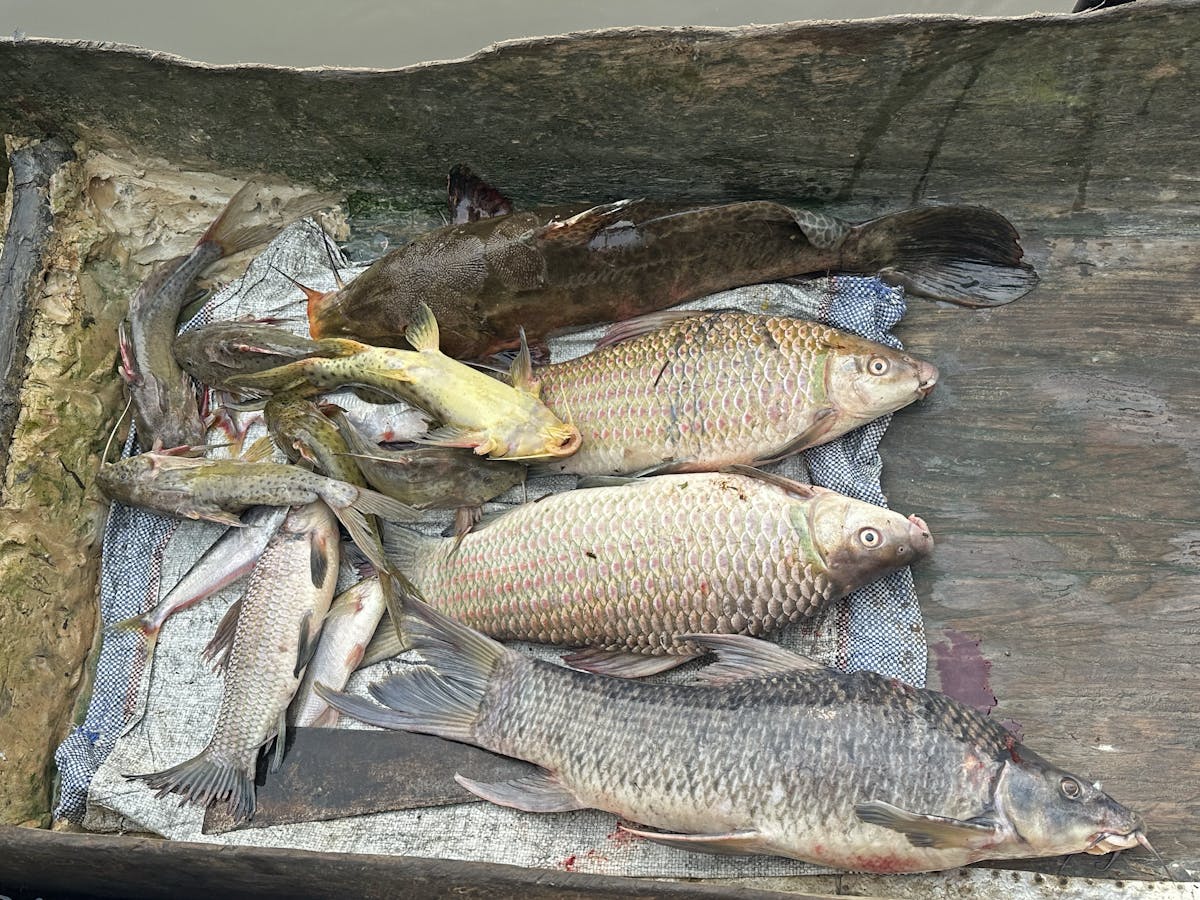
The tackle for goliath tiger fish is fairly industrial due to their sharp teeth and rock-hard bony mouths. Even with four size 2/0 trebles mounted on a 100lb wire trace, you still need some luck to keep one on the hook if you’re lucky enough to get a bite.
They tend to hunt in the upper layers, so my setup involved a large float with the bait set at around 6ft deep. After mounting a live Cornish jack (a type of electric fish) on the hooks, I trotted it down to the edge of an eddy and kept it in position while holding the rod all the time.
The bait hadn’t been out for long before the float suddenly disappeared under the surface. Still, rather than the incredibly fast take I was expecting, which I’d experienced previously, it stayed submerged. My strike was met with very little resistance before whatever was on the end came adrift. When I wound in, I could clearly see the tooth marks across the back of the bait. The size of these marks indicated it was either a very small goliath or another smaller species of tigerfish, which is also present in the Congo, so I wasn’t too upset about not connecting with it.
The rest of that day and the next couple proved to be uneventful, both bait fishing and also paying a visit to the tributary to lure fish, aside from getting caught in a bad thunderstorm with torrential rain and having to shelter in a mud hut in a village for a few hours until it had subsided enough to motor back to the lodge. Thankfully, the weather was mostly dry and sunny, with temperatures in the mid-30s but feeling much hotter, and with the sun being incredibly strong – this is their hottest time of year, and it was a lot warmer than during my previous trip.
On the fifth day, we ventured further up the tributary, past a set of rapids, and shortly after starting fishing, something hit my TigerWakka spinner like a steam train and a decent-sized tiger fish of around 12-13kg was soon completely airborne. Surviving the first jump and the hook staying in increases your chances of landing the fish, but after a decent fight and getting the fish alongside the boat, it suddenly comes off. Unfortunately, this isn’t uncommon, as, throughout the fight, they are chewing on the hook to try and dislodge it – I could clearly see the marks that its teeth had left on the shank of my size 9/0 single hook! Even when you land them, the hook will often fall out in the boat unless you get lucky and it penetrates through the bone.

My run of bad luck continued when less than an hour later, I hooked another fish soon after arriving in another spot, casting into deep, slacker water out of the main flow. This fish stripped a lot of line before eventually stopping and jumping clear of the water just before it reached some rocky rapids. The rest of the fight was slow, and the fish stayed deep. I was praying it would stay on, as we’d seen that it was in the 20-25kg bracket, which I’d have been very happy with on bait, let alone on a lure.
Unfortunately, it wasn’t to be, and while it was plodding around alongside the boat, the hook suddenly came out as it turned back towards me. I was gutted, especially after having done all the hard work to get it so close to the boat and seeing its size!
The next few days were spent lure fishing on the tributary, and although I didn’t manage to land any, I had several other hits from small goliaths that immediately went airborne and threw the hooks, plus one more hit from a good one that bit my spinner so hard that it bent the thick wire stem on it to more than a 45-degree angle, but it didn’t hook up.
My friends had better luck and managed to land a couple of very good fish, including one of just over 50lb for Andy—a very impressive fish. it was great that we were very close to their boat at the time and got to see it. My boat partner Marc managed goliaths of 45lb and 27lb, plus there were a number of smaller fish to around 20lb caught as well.

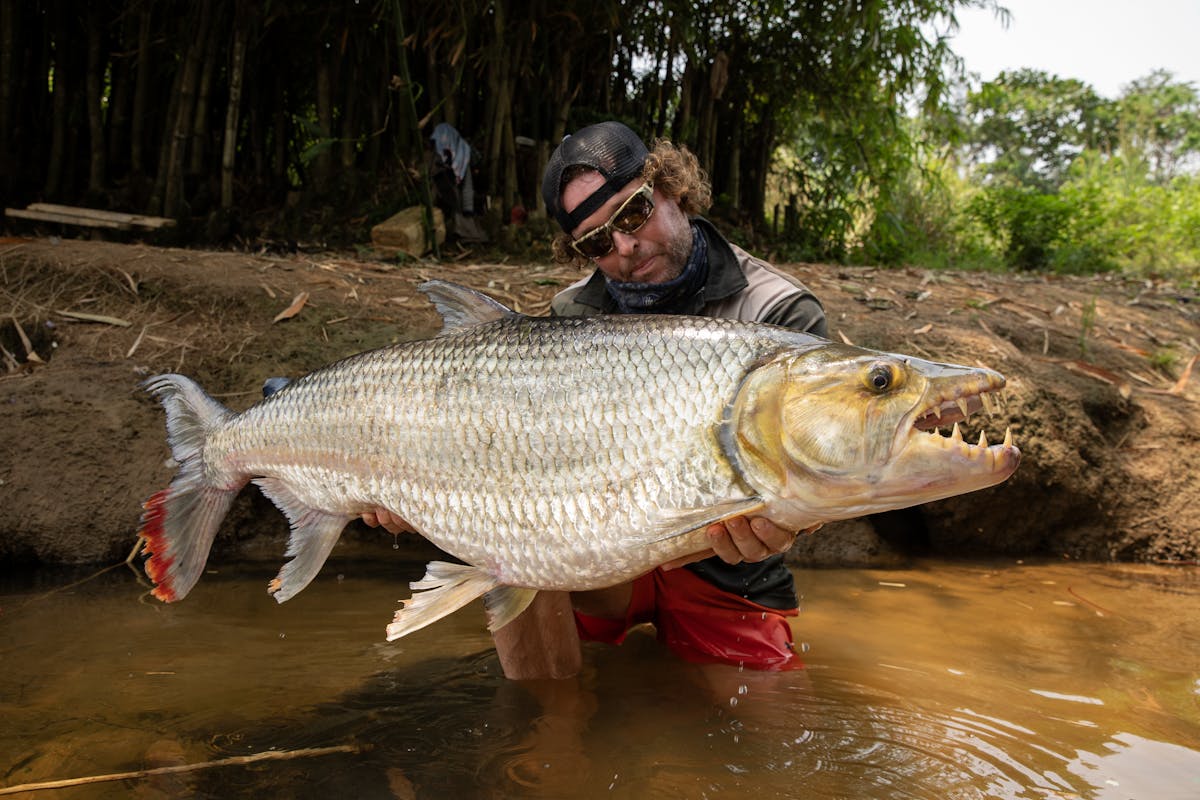
With just two days left to go I was starting to wonder if I would actually manage to land one, and was pleased when we decided to go back to bait fishing on the main river, as that is more my sort of fishing than the lures – much as I enjoyed having a go with them. A lot of the bait fishing on this part of the river involves drifting with the current, with baits out under a float, and casting to any likely looking spots, such as eddies and creases, as you go along.
After trying a few areas we ended up in one that looked good and which we had fished previously but without any action, and shortly after casting out a deadbait and trotting it away from the boat, the float disappeared and before my brain could even register it going under, line was being taken from my reel at a rate of knots, the fish had hit the bait that hard.
I engaged the reel out of free spool mode and struck hard several times, upon which the fish went airborne, but thankfully stayed on, and although I had seen it wasn’t a monster, I was very keen to finally land one.
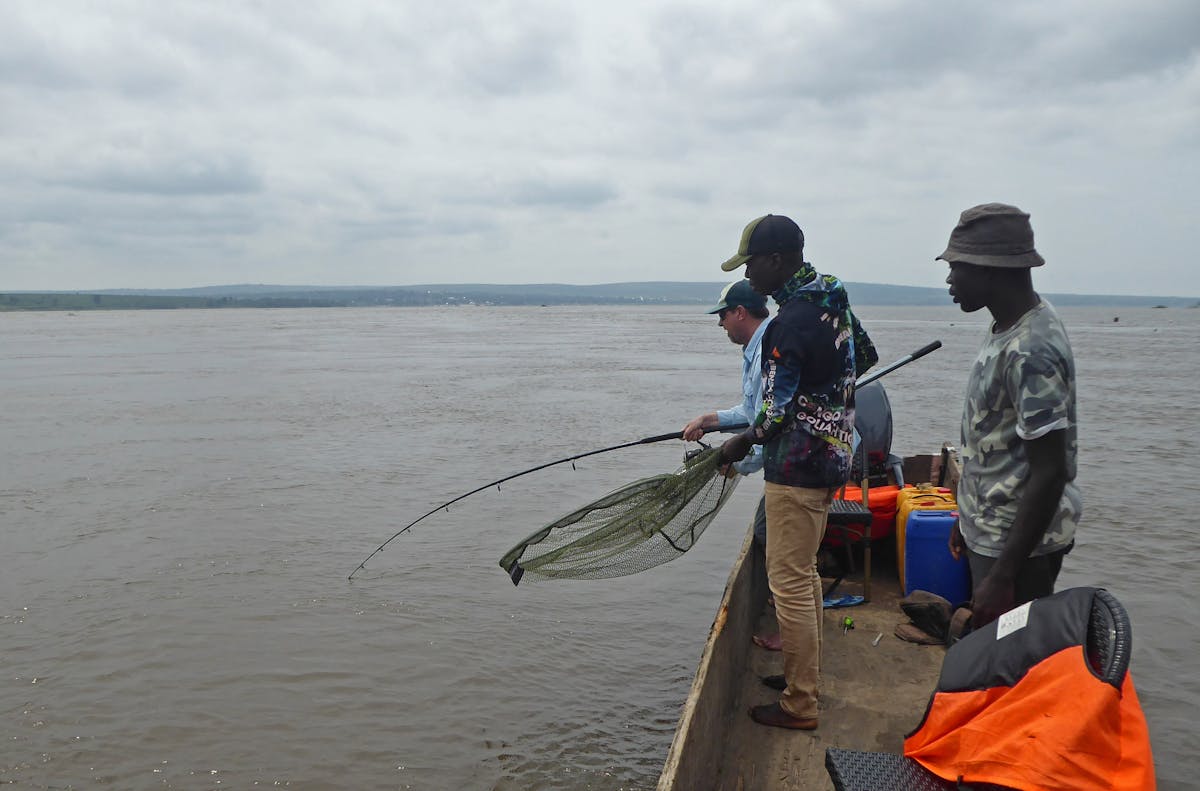
After a few hairy moments next to the boat, as they love to try and go under it, our guide, Elo, was finally able to net it for me. It weighed 23lb, and although not the monster I’m still dreaming of one day catching, I was very pleased to get one, as all goliath tiger fish are special.
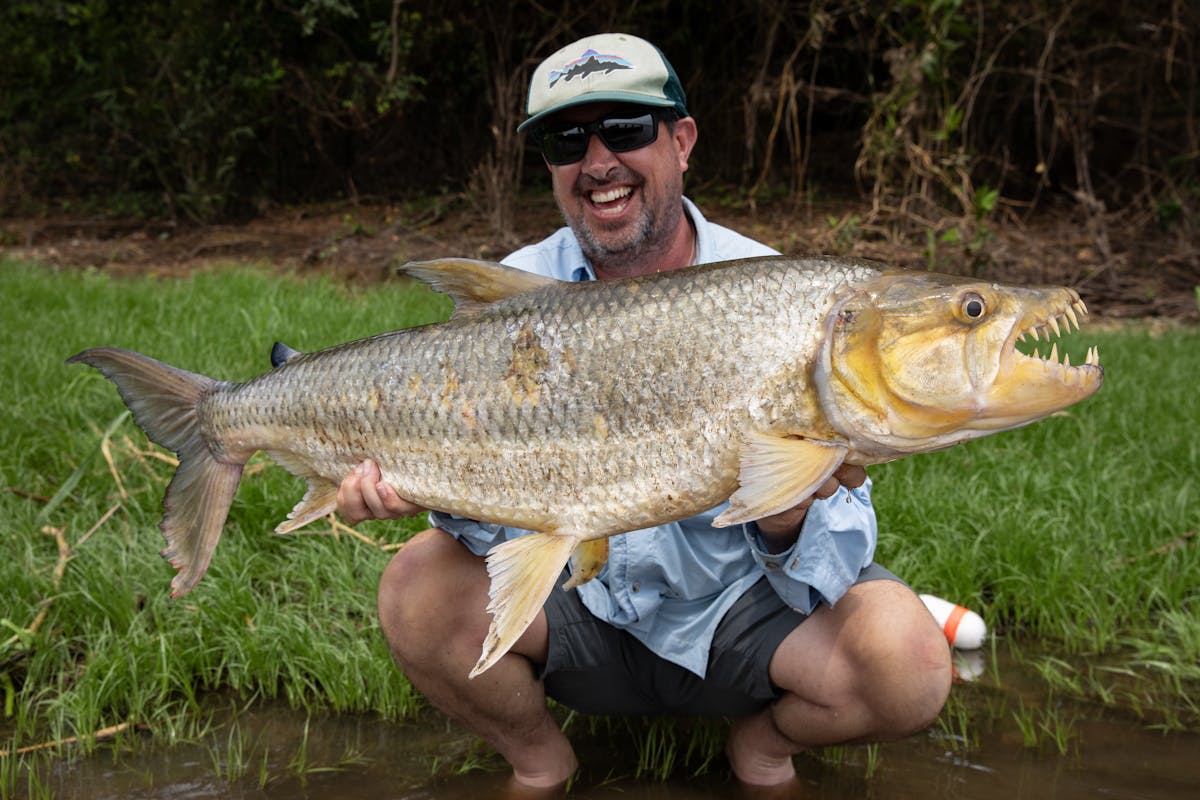
After a couple of quick photos in the water, I released it and it swam off strongly, as did most of the other ones that we caught – they are a delicate species and you will always get the odd one that won’t go back, but with care and effort plenty will. Towards the end of our last day on the river we were drifting the same area again when I had another chance, but unfortunately this one, a fish of 30lb or so, jumped clear of the water and threw the hooks before I even had a chance to strike – it went airborne almost the instant it took my bait!

I’ve already fallen in love with this river, and can see why the book referred to it as the ‘Crazy River’, plus the people living alongside the river are great and generally very friendly. I can’t wait to go back again later this year for another go, and hopefully get the monster that I’ve always dreamed of – although even if I do, it is a river I can see myself fishing regularly over the coming years, especially as so much of it is totally unfished by sport fishermen and few westerners will ever have been there.
Related news

The Fishing Gurus Live Audience Podcast - Christmas Special
24.10.2025
Matt Godfrey and special guests are back for a LIVE Christmas Special!

Guru Feeder Cup 25/26
24.10.2025
An awesome series of matches that lead to one lucky winner! Pick your qualifier and enter

Kiveton Over 50s Autumn Festival 2025
27.10.2025
Find out more and get tickets for this fantastic 2-day event - 29th & 30th of October
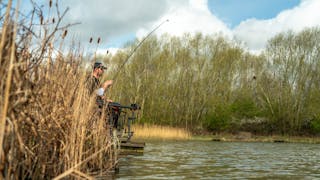
Kiveton Silverfish Festival 2025
27.10.2025
Back this November with a Top prize up to £1500 for the winner!

